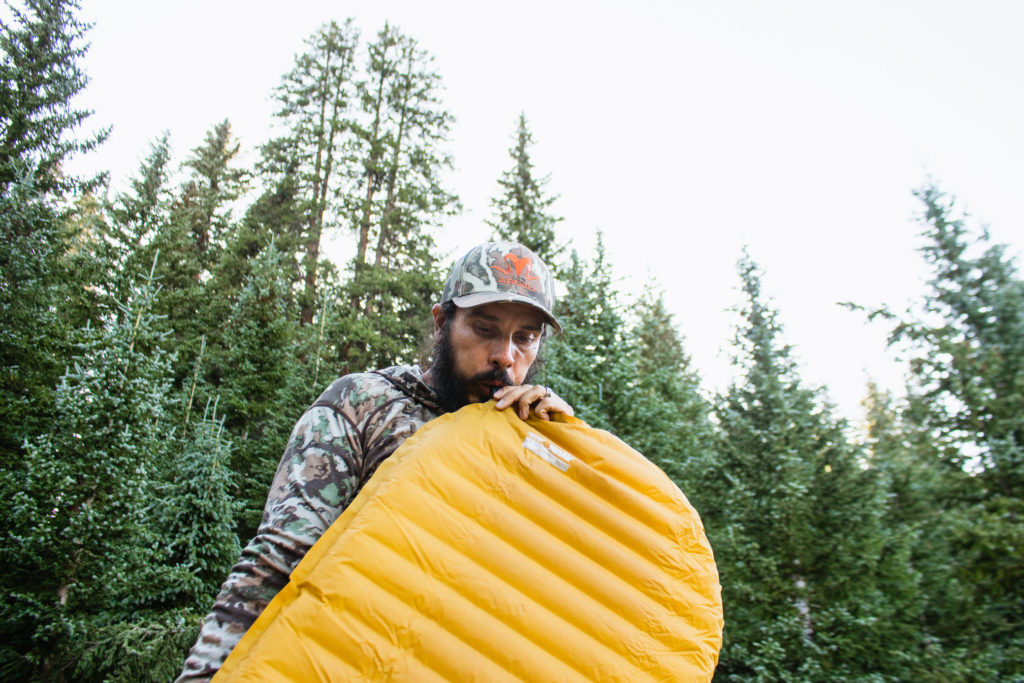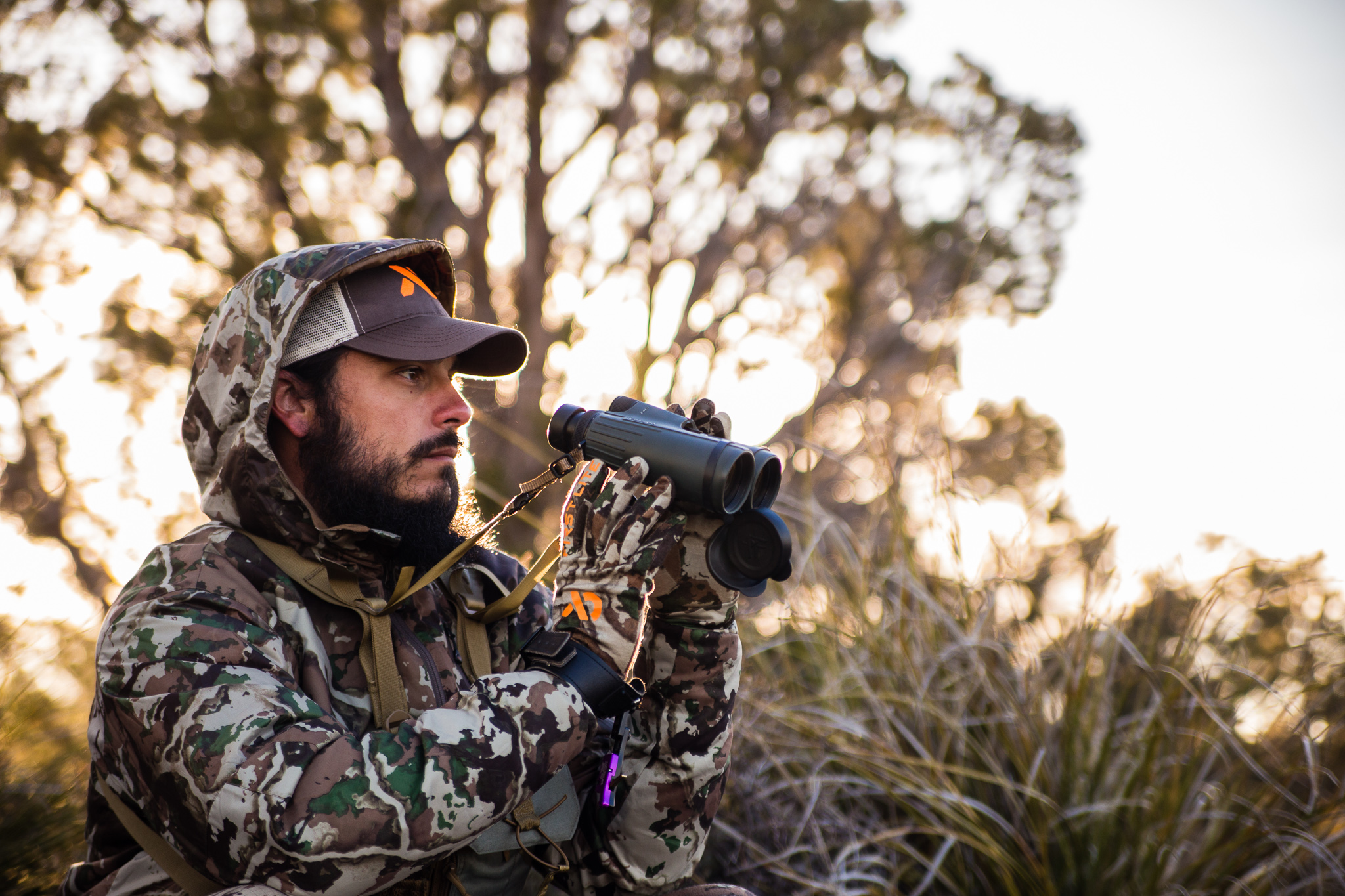
A good sleeping pad can either make your trip or break it. I’ve been on both ends of that, and the break part isn’t fun. Especially, when it’s 10 degrees at night. Picture someone running in place while in their sleeping bag, just trying to conjure up any bit of heat. That was me. Since that particular hunt, I vowed to always have a quality sleeping pad underneath me and ditch the old school foam roll up kind. Almost 10 years later, I’ll say this. Inflatable sleeping pads are the only way to go.

Before I enlighten you with the goodies of why inflatable pads win the day, let’s chat real quick about the purpose of a sleeping pad in the first place. On the surface, sleeping pads are usually looked at as a means of cushiony comfort, and they are to an extent. But the true reason for a sleeping pad is to help insulate our body heat and act as a buffer between the cold ground and us. Some might ask “isn’t your sleeping bag supposed to keep you warm? Yes, but it has a partner in crime and that is the sleeping pad. You see when we lay in our sleeping bags, the part that we are laying on top of gets compressed from our body weight. This, now compressed insulation, is no longer insulating, and it really renders it quite useless. Because of this, many folks use a quilt with no underside to cut the weight of their sleep system. Be that as it may, the sleeping pad plays an intricate roll in the insulation department.
Pads are usually rated with an R-Value which can be compared to temperature ratings on sleeping bags. The lower the R-Value, the less the insulation. For most trips a good do it all R-Value is going to be between 3 and 4. For colder trips, bump that up to 5+.
We’ve established that one of the main purposes of a sleeping pad is to help insulate our body temperature and separate us from the cold ground. And we’ve also established that each pad has an R-Value that represents the measurement of how warm a pad is. When compared to other pads, inflatable offers a wider range of warmth for a much smaller package.
Those closed cell foam pads are only packing an R-Value of about 2. This is fine for summer camping, but when the temps drop, you’ll be in trouble. Not to mention, they are huge and take up a load of space. A self inflating model pad will get you into a higher R-Value, but these can be in upwards of 4-5 pounds per pad! That is not a friendly weight for a backcountry hunter looking to come out heavy.

With inflatable pads, you’ll get a much more adequate R-Value for much much less weight and bulk. The pad I run is 12 ounces with an R-Value of 3.5. So, as far as I see it, they offer a higher weight to warmth ratio, which makes them warmer all together. It’s just a more efficient system, and in the backcountry, efficiency is everything.
Along with freezing my cajones off that night, I was also super uncomfortable. And before this frigid night, I had spent many nights on that old closed cell foam pad and they were all sub par. I never could quite find that sweet spot, if that makes sense. In turn my sleep would suffer, which would put a damper on my whole next day. Being tired effects one’s mood, it can decrease motivation, and of course your overall performance on backcountry excursions. What I’m getting at here is that comfort is important. And inflatable sleeping pads are a game changer in that category, especially if you’re using one of those old closed cell pads I mentioned.

I’m a side sleeper and honestly do well with the majority. Whether you’re a side sleeper or not though, there are tons of different options out there in terms of pad thickness. Some like a thicker pad, and that’s fine. Going that route usually means carrying some extra weight in your pack though. But, if that’s what will ensure you a good night sleep, carry it. Go for comfort.
One of the first things on my radar when I started backpack hunting was how much room different gear items took up in my backpack. When I noticed that I immediately started trying to figure out ways to diminish that bulk in order to make room for more food. Remember this. Everything in your backpack besides food is a constant, with the exception of some extra clothes here and there when the temps drop. This means that no matter the duration of your stay out there, everything stays the same, except your food. So, trying to make those items as small and light as possible should be in your best interest. And in return, you’ll be rewarded with the ability to bring along more food, which means more nights can be spent away from the vehicle. Your sleeping pad is a part of this constant.

Inflatable pads are just plain smaller and lighter than the others on the market. Of course there are some that are bigger and heavier than others but the possibilities of going super ultralight exist here far more than other types of sleeping pads. The edge that inflatable has is the bulk of the pad when in use is made up of the air you blew into it. Everything else is a fancy thermoregulating shell. Take all of that air away and they can be rolled up super small and take up less room than a Nalgene bottle. For less bulk, inflatable sleeping pads are a no brainer.

That 10 degree night left me with mixed emotions. On one hand, it just plain sucked not getting any sleep and freezing. On the other though, I’m glad it happened. It taught me a valuable lesson. One that lead me down a path of warm cozy nights with plenty of sleep. You live and learn right? Take it from me, and avoid my mistakes. Inflatable sleeping pads are the way to go. No ifs, ands, or buts about it.
Bonus Reason – There are far more options of sleeping pads available for inflatable than any other. Shapes, sizes, and thicknesses are fairly customizable.
To learn more about backpack hunting, check out my book Becoming a Backpack Hunter: A Beginner’s Guide to Hunting the Backcountry


Copyright 2019 Dialed In Hunter
Design by NXNW.